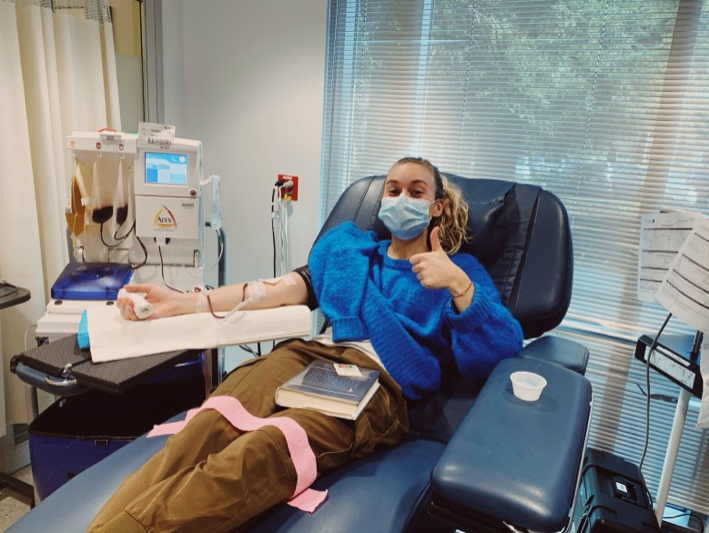Stanford Blood Center is calling for convalescent plasma donations from people who have recovered from COVID-19, as part of a nationwide experimental effort to treat patients with active COVID-19 cases.
People who have recovered from COVID-19 have antibodies in their blood’s plasma that may help fight the virus. The new treatment, which has been approved as an investigational product by the U.S. Food and Drug Administration, aims to utilize these antibodies by transferring them to patients who are currently battling the virus.
“The thought is that when you transfer those antibodies into a patient that has an active COVID-19 infection, the antibodies may be effective against the infection,” said Suchi Pandey, chief medical officer at Stanford Blood Center.
The treatment is still in the experimental stages, but initial anecdotal reports have been encouraging. Additionally, convalescent plasma has previously been used in combating viruses, including polio and SARS. In a time in which there is no definitive COVID-19 treatment, researchers hope this approach could offer a promising potential solution.
Like other blood centers across the nation, Stanford Blood Center expects to ramp up its collections in the coming weeks. The process is similar to the typical plasma aphaeresis procedure conducted by Stanford Blood Center. Blood is drawn from the donor’s arm and then sent to a machine which separates out the plasma. Once divided, the unneeded blood components are returned to the donor.
These donations can make a large impact.
“One donation of convalescent plasma can end up helping three patients,” Pandey said.
About three weeks ago, 27-year-old Elle Wohlmuth became Stanford Blood Center’s first plasma donor. She had tested positive for COVID-19 when there were still only around 25 recorded cases in San Francisco.
“At the time, I didn’t know a single other person who had it, so it still felt very scary,” Wohlmuth said.
Recognizing that her early recovery put her in a unique position to help other COVID-19 patients, she began searching for ways she could get involved with treatment efforts. That’s when she came across the convalescent plasma clinical trials.
“It’s a very simple and not too intensive thing that we can do to save a life, so it definitely feels worth it,” Wohlmuth said, adding that the entire process took around two hours to complete. “It’s a tangible way to give back … I feel very grateful to have had the opportunity.”
So far, Stanford Blood Center has found that many recovered COVID-19 patients, like Wolmuth, are eager to help by donating blood. However, prospective donors must meet specific criteria related to their COVID-19 case, in addition to meeting standard blood donation criteria. This has shrunk the already limited pool of possible donors.
‘We’ve had about 300 people respond to our intake survey, but I’d say only about 15% are actually qualified to donate,” Pandey said.
In order to qualify, donors must be fully recovered from COVID-19 and symptom-free for at least 14 days. If they have been symptom free for fewer than 28 days, they are required to take an additional test to ensure that the results are negative. All donors must have initially tested positive for COVID-19 — either through a test at the time of illness or an antibody test.
Stanford Blood Center aims to receive as many donations as possible in order to help evaluate whether convalescent blood transfusions can act as an effective treatment of COVID-19. Under the FDA’s authorization, some of the donations are used for clinical trials, while other donations are used for the expanded access program — an initiative which allows plasma to be transferred to patients with serious or immediately life-threatening COVID-19 cases regardless if they are involved with official clinical trials.
“It is really important for us to start building up this inventory to support clinical trials and also to support patients who providers are requesting donations for now — and for potential donors, it’s a great way to help other patients who are sick with the disease,” Pandey said.
Interested candidates can apply to donate plasma at stanfordbloodcenter.org/covid19plasma.
Contact Meghan Sullivan at meghans8 ‘at’ stanford.edu.
